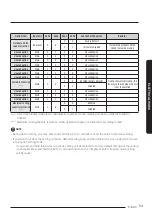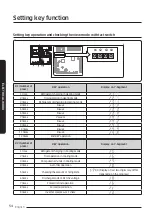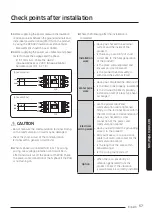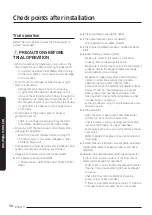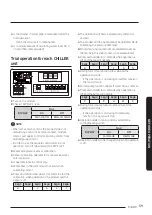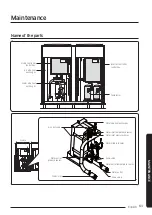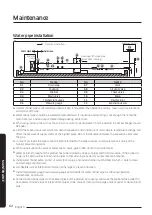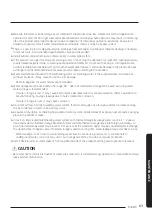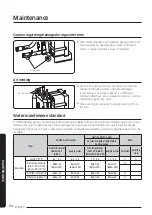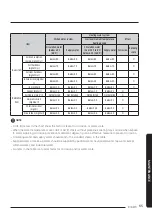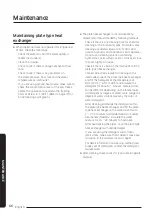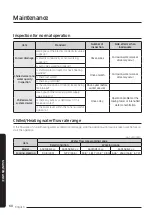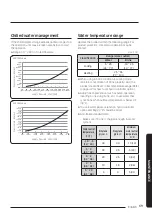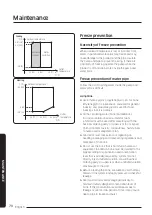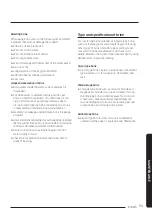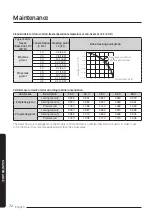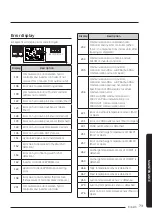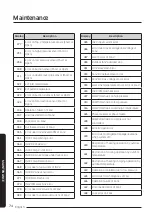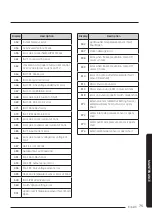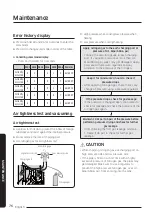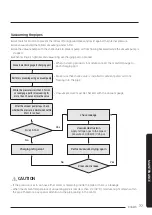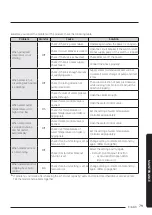
MAINTENANCE
Maintenance
66
English
Maintaining plate type heat
exchanger
f
When the product was not operated for long period
of time, check the followings:
- Check the water to see if the water quality is
meets the standard.
- Clean the strainer.
- Check to see if there is enough amount of flow
rate.
- Check to see if there is any problems on
the water pressure, flow rate and the water
temperature at inlet/outlet.
- If you are using ground heat source, make sure to
check the concentration level of the anti-freeze
before the operation to maintain the freezing
point at below -8°C (18°F). (Refer to page 72 for
brine freezing point graph.)
f
The plate heat exchanger is not serviceable by
disassembly. It must cleaned by following methods.
- Check if there is any cleaning hole for chemical
cleaning at the inlet water pipe. For water scale
cleaning use diluted (down to 5 %) citric acid,
oxalic acid, acetic acid, phosphoric acid. However,
do not use a cleaning solution containing
hydrochloric acid, sulfuric acid or nitric acid since
they are highly corrosive.
- Check if there is valve on the inlet/outlet of the
plate type heat exchanger.
- Connect an exclusive pipe for cleaning to the
inlet/outlet pipe of the plate type heat exchanger
and fill the detergent at the temperature of
50°C (122°F) ~ 60°C (140°F) and circulate the
detergent for about 2 ~ 5 hours. Cleaning time
can be different depending on the temperature
of detergent or degree of water scale. Judge the
degree of water scale removal by the color of
water detergent.
- After cleaning, discharge the detergent within
the plate type heat exchanger and fill the plate
type heat exchanger with a water mixed with
1 ~ 2 % of sodium hydroxide (NaOH) or sodium
bicarbonate (NaHCO
3
). Circulate the water
mixture for 15 ~ 20 minutes to neutralize.
- After neutralizing the pipes, rinse the plate type
heat exchanger with distilled water.
- If you are using the detergent sold at local
retail stores, make sure that it doesn't cause any
corrosion to the stainless steel or copper.
- For detail information on cleaning method (and
proper use of detergent), contact the detergent
manufacturer.
f
After cleaning, check to see if it is possible to operate
normally.
Summary of Contents for AG010KSV Series
Page 85: ...MAINTENANCE 85 English MEMO ...
Page 86: ......


